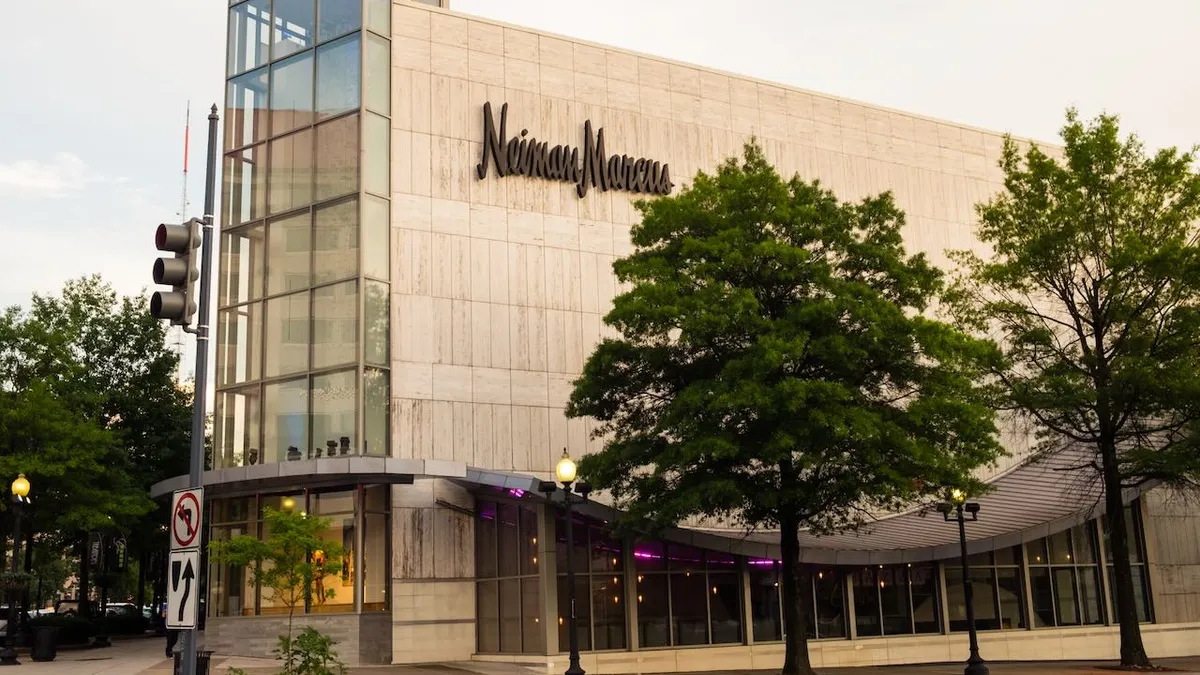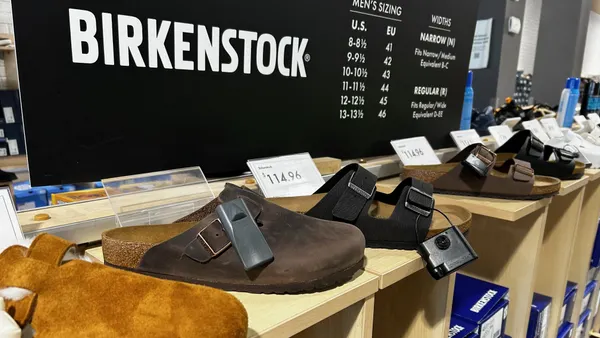Dive Brief:
-
Neiman Marcus Group on Thursday filed under Chapter 11 in the U.S. Bankruptcy Court for the Southern District of Texas, Houston Division, and said it has entered into a restructuring support agreement with "a significant majority of its creditors," who will become the majority owners of the company. Shareholders have approved the setup.
-
The binding agreement is with holders of more than two-thirds of the company's outstanding debt, according to a company press release. Certain creditors have committed $675 million in debtor-in-possession financing during the bankruptcy process and to a $750 million exit package that would fully refinance the DIP and provide additional liquidity.
-
Once out of bankruptcy, expected in early fall, the company anticipates having no near-term maturities and to have eliminated some $4 billion of its existing debt. The Mytheresa business, the subject of much contention in recent years, isn't part of the Chapter 11 process and "will continue to operate independently," the company said.
Dive Insight:
The COVID-19 pandemic has thrown a curveball at the retail sector that even the healthiest players have found difficult to field, and Neiman Marcus is not one of the healthiest players.
In emailed comments, GlobalData Retail Managing Director Neil Saunders said that even in normal times, by living on so much borrowed money, "Neiman Marcus was always living on borrowed time," and had no option but to turn to the bankruptcy court.
In a statement Thursday, CEO Geoffroy van Raemdonck said that Neiman Marcus Group, which also includes New York's Bergdorf Goodman, had been "making solid progress" toward profitable growth before the disease outbreak. But the retailer has been weighed down by debt piled on during two rounds of private equity ownership and struggled to operate in a department store segment that itself has been under siege for years.
Van Raemdonck touted the company's luxury position as an advantage, saying that its customer base has grown. "We have ... made meaningful strides in our transformation to become the preeminent luxury customer platform."
But now that customer base appears to be shrinking. After declining by about 25% in the first quarter, the global luxury market is expected to slow even further in the second, which could lead to a contraction of 20% to 35% for the year, according to a report from Bain and Co. released Thursday.
The e-commerce advances also mentioned by van Raemdonck could work in its favor, as Bain also expects digital sales to grow to 30% of the luxury market by 2025. But Saunders said while the retailer "has made some good strides into online retail, ... it needs to drive this channel much more strongly if it is to both attract new shoppers and stay on top of changing consumer habits."
But it's the Chinese luxury consumer who will serve as the backbone of the segment, set to account for nearly half of the market by 2025, according to Bain.
For all those challenges, the $675 million in DIP financing that Neiman Marcus has collected "underlines the fact that investors still see a future for the chain," Saunders said. "We concur with their view that, once the debt has been eliminated or at least reduced, there are reasonable prospects for survival."
The Chapter 11 process will not affect the timing of reopening stores as pandemic-related restrictions ease, per the release. This week, doors opened to customers, by appointment only, at an Atlanta and a Dallas store, and curbside pickup is possible at 10 stores. Otherwise, the company is extending temporary closures of some Neiman Marcus, Bergdorf Goodman and Last Call stores through May 31. Furloughs or temporary salary reductions are in effect "for a large portion of associates through at least May 31 with the potential to either extend or shorten based on COVID-19 developments," the company said.















